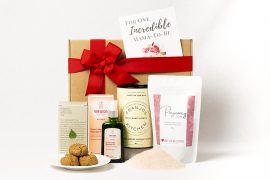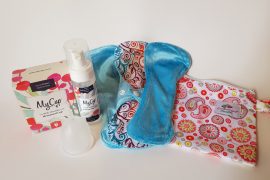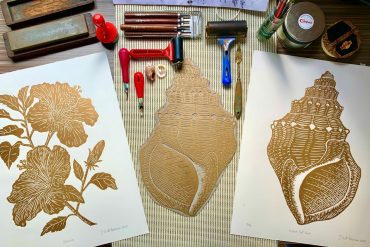4. Deodorant
Before starting this journey, I couldn’t picture what a plastic-free deodorant option even looked like, even though I knew conventional deodorant frequently contains triclosan, phthalates, formaldehyde, parabens and aluminum.
When I made the switch to a deodorant bar, I made a commitment. For six weeks, I stunk. But one day… literally, one day, I noticed a difference. It was then that I realised it took that long for my body to get rid of the toxins I’d been rubbing on my underarms every day. It took even longer to adjust to not having antiperspirant. But the more my body adjusted, the more the slight dampness is just that – dampness, but not the cause of body odour. As if I needed more convincing, the longevity of this product is incredible, with one bar lasting over six months.
5. Shampoo
Modern shampoo is a highly engineered product, designed to leave our hair squeaky clean.
Besides polluting local rivers and mutating fish, all those chemicals are also left behind on our scalps to slowly absorb into our bloodstream.
Experts insist our natural oils do the best job of keeping our hair healthy and stripping them away with harsh ingredients, only to add them back in artificially with conditioner, doesn’t make sense.
Every year, over 80 billion plastic bottles are disposed of just from shampoo and conditioner alone. One shampoo bar equals about three bottles of liquid shampoo. It takes a couple of washings to get used to holding a bar, and you definitely have to limit yourself to only a few swipes over your head. But most bars still give you that addictive lather, make your hair smell nice, and feel great.
6. Conditioner
According to people who study this kind of thing, we only started needing chemically-controlled conditioners when we started using chemically-controlled shampoos. Like shampoo, modern conditioners are basically a cocktail of chemicals, with all of the same health and environmental concerns.
Transitioning from soft, squishy, easy-to-massage-in commercial conditioner to a conditioner bar was a little bit more of a challenge than transitioning to the shampoo bar. But stick with it. Soon, it will be second nature to rub a bar over your head for soft, toxin-free hair.
7. Toilet Paper
When you think of environmental mishaps, toilet paper probably doesn’t jump to the top of the list. It takes 37 gallons of water to make one single roll, and most brands use bleach and other toxic chemicals.
As shocking as it may sound, toilet paper isn’t the only option to clean our undercarriage.
For example, when your hands get dirty, you don’t just wipe them with a paper towel. You wash them, with water. What’s the big deal with doing the same thing with your tush?
Bidets, while seemingly only for the posh European crowd, are popular in many places around the world. Using just an eighth of a gallon a flush, the mechanics makes sense once you get over your squeamishness. If you just can’t convert, cloth toilet paper is your next best option. Compare this to using cloth diapers or a handkerchief, which we accept as sanitary when taken care of properly.
Danielle Vick is an environmental copywriter who moonlights as the Green Living Detective, uncovering how our modern actions impact the environment. She lives in the high Rocky Mountains of the US with her husband and daughter. Follow her on Facebook or Pinterest.










